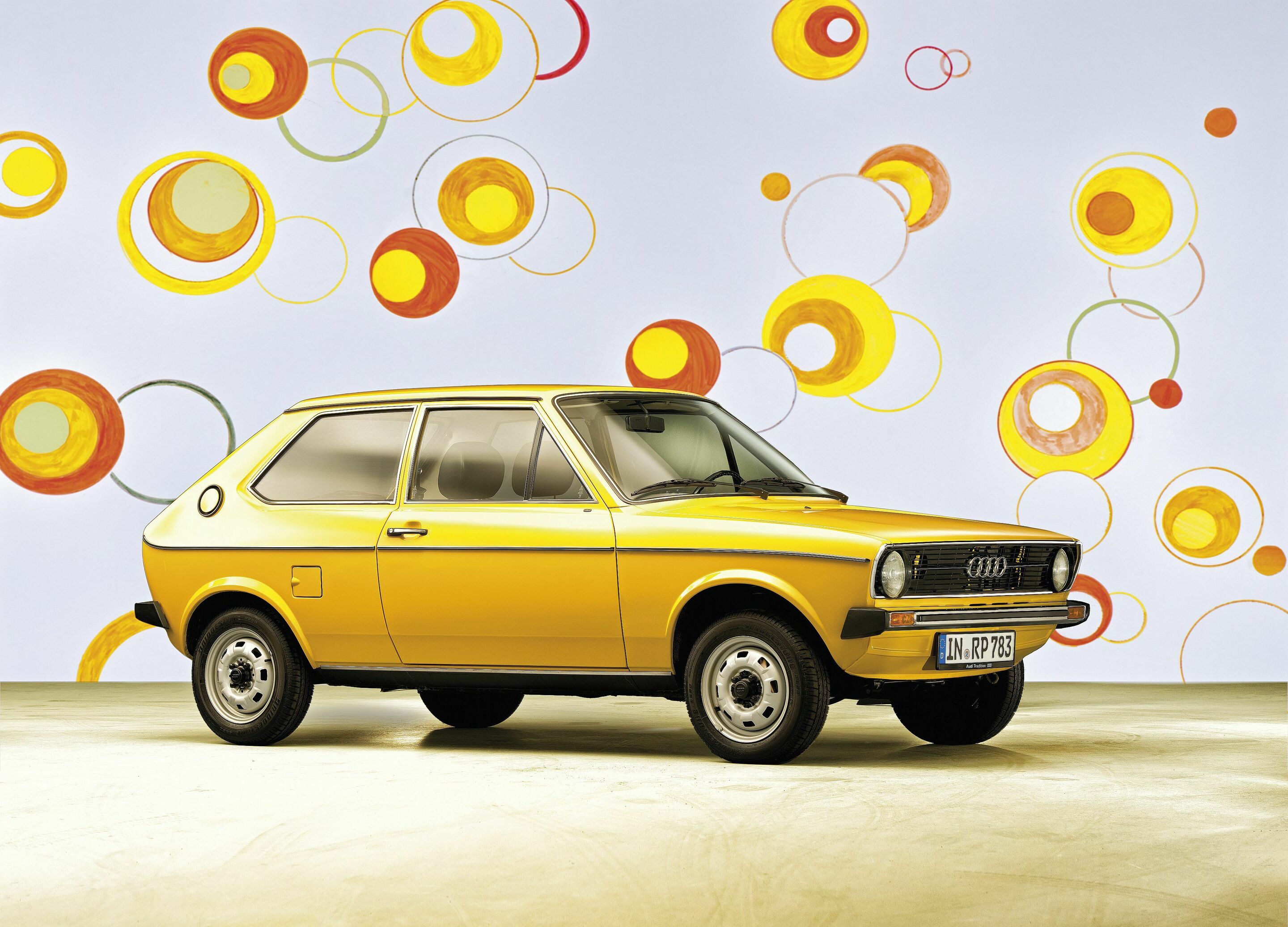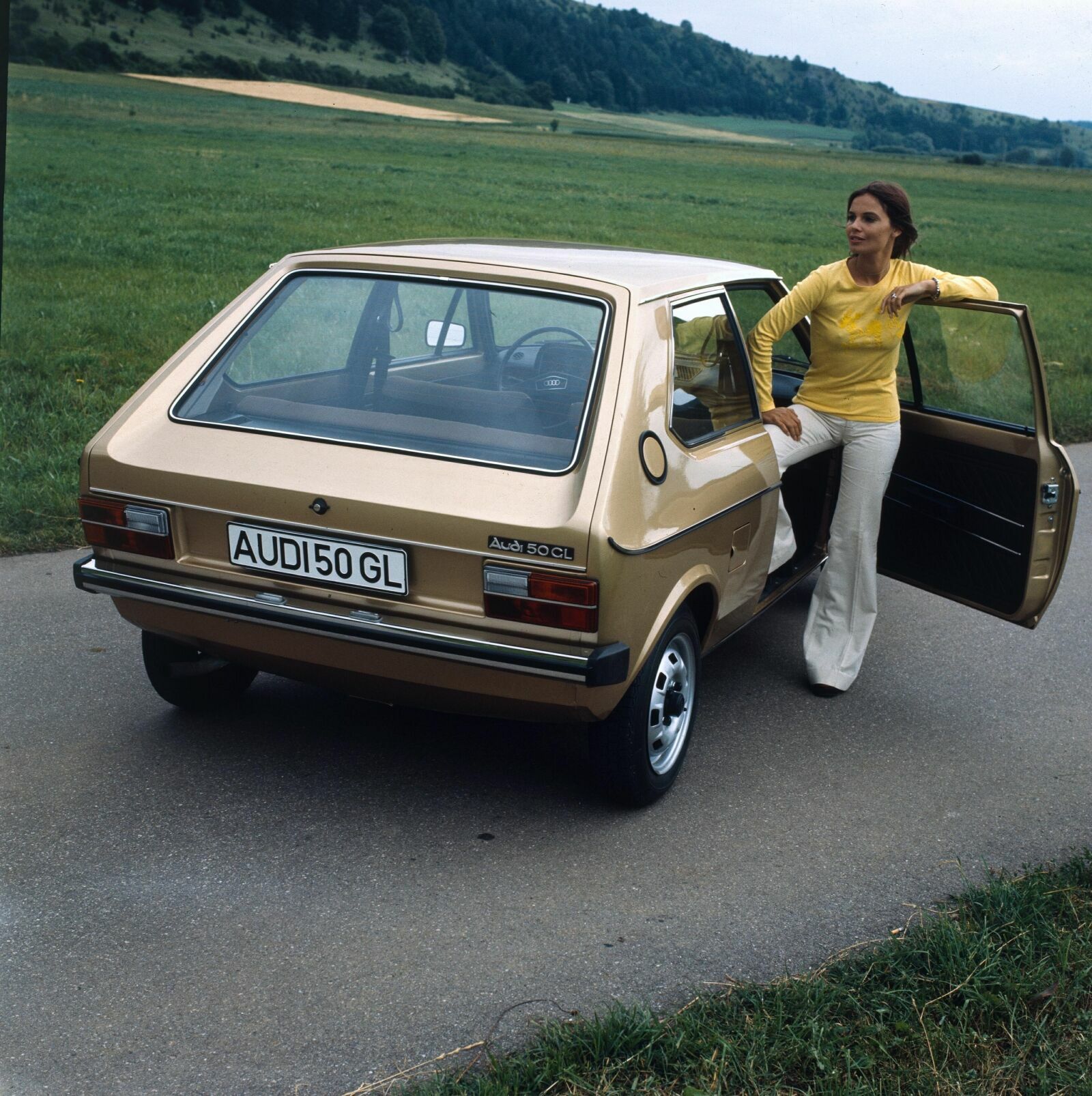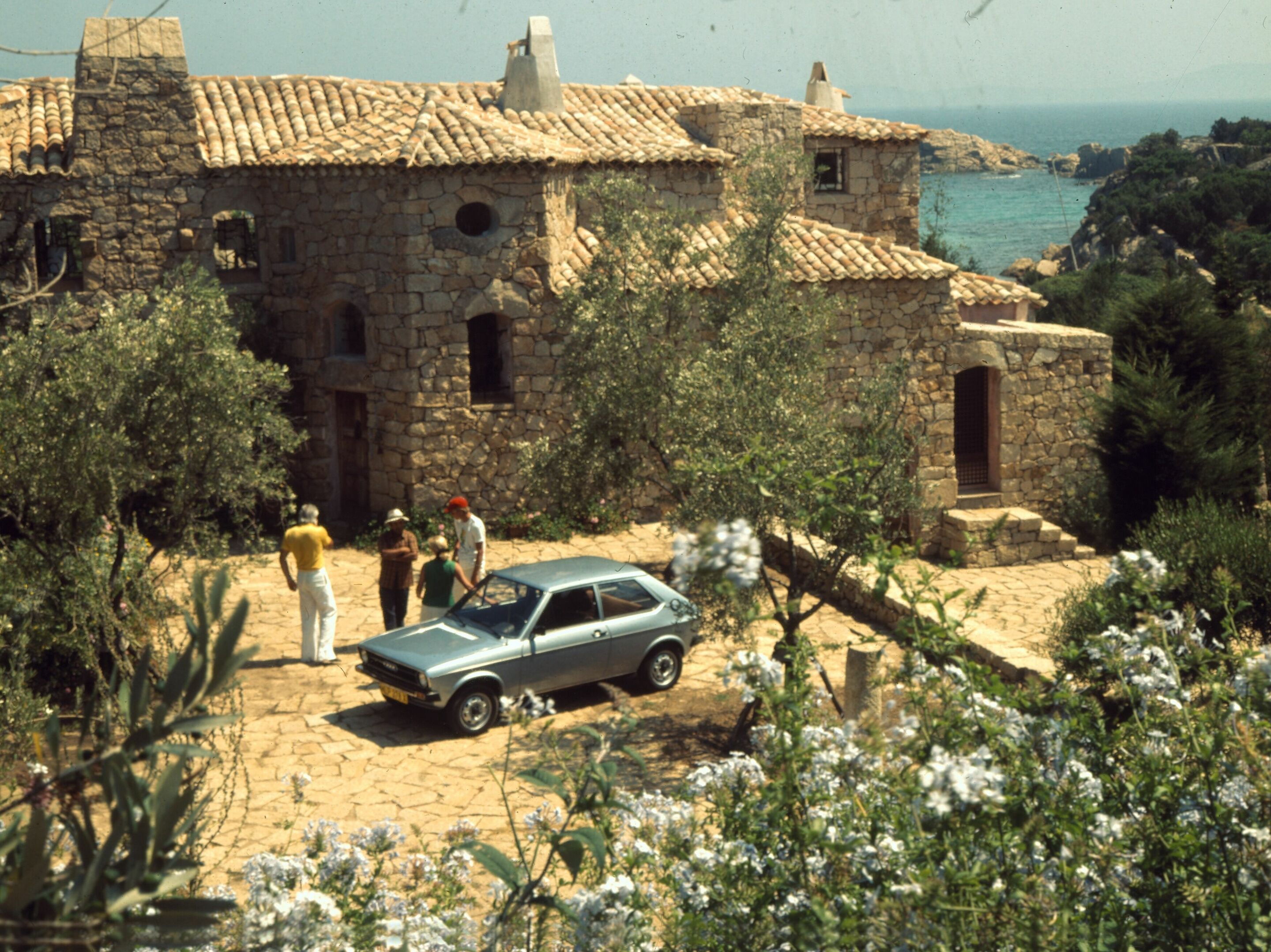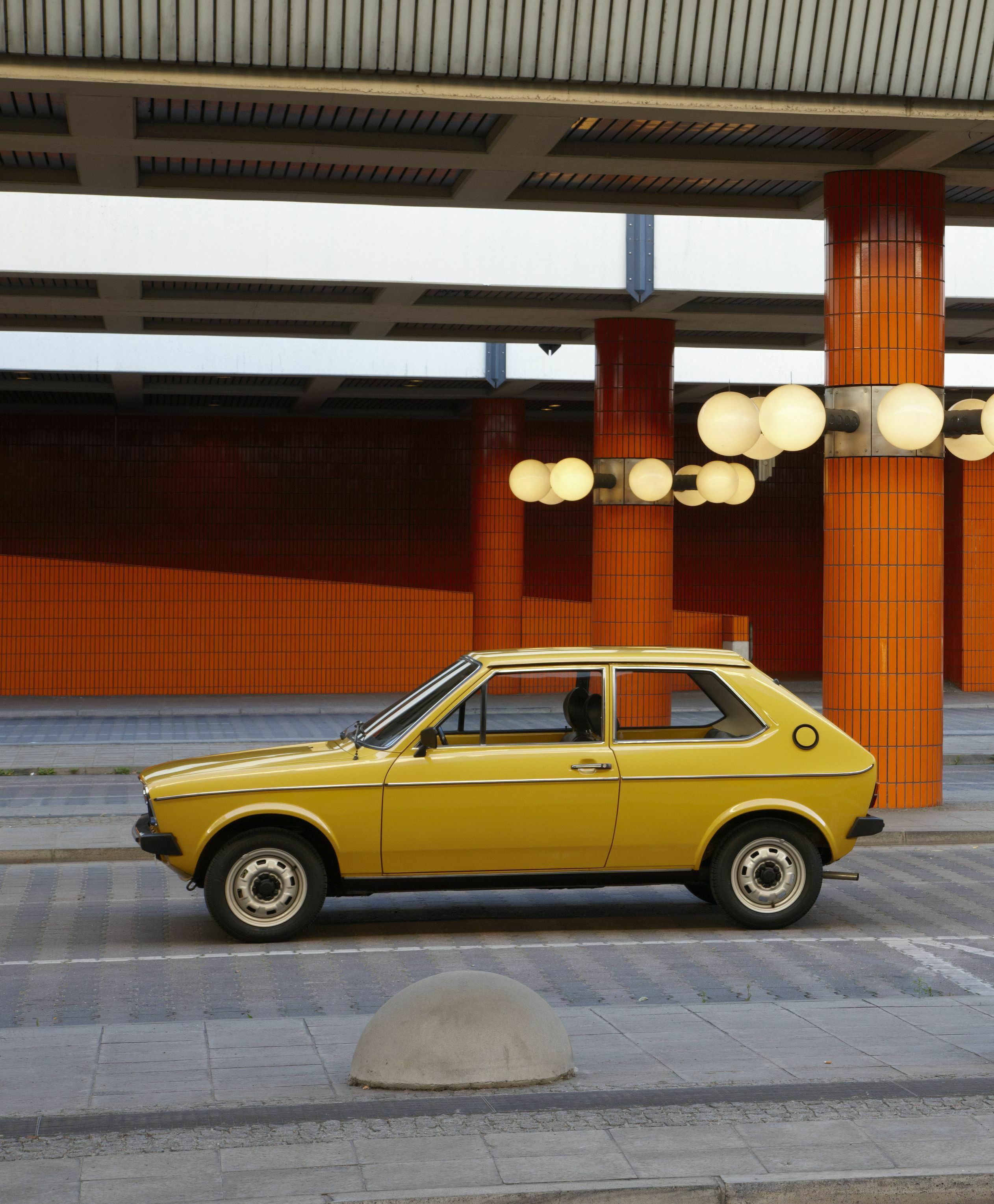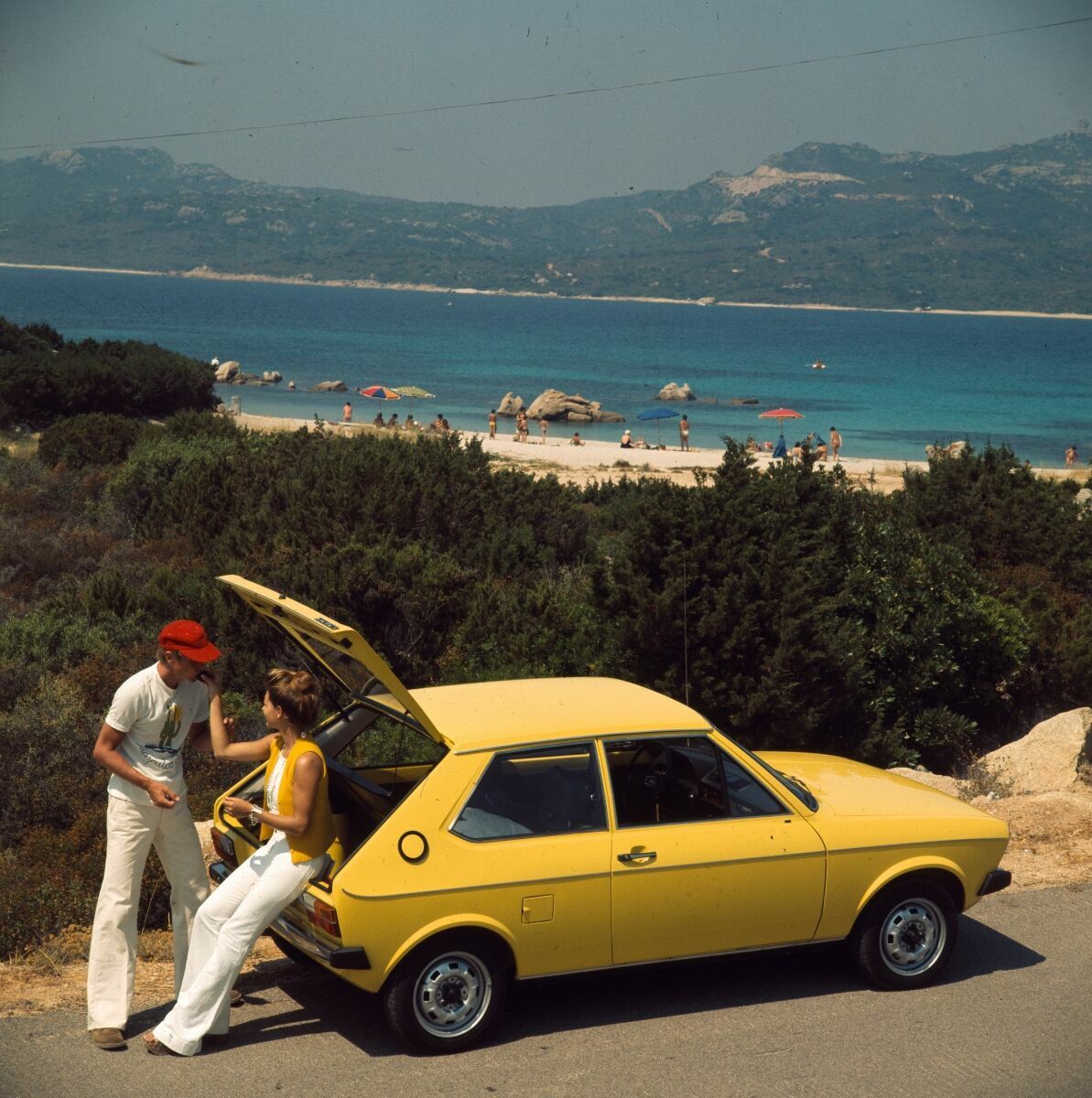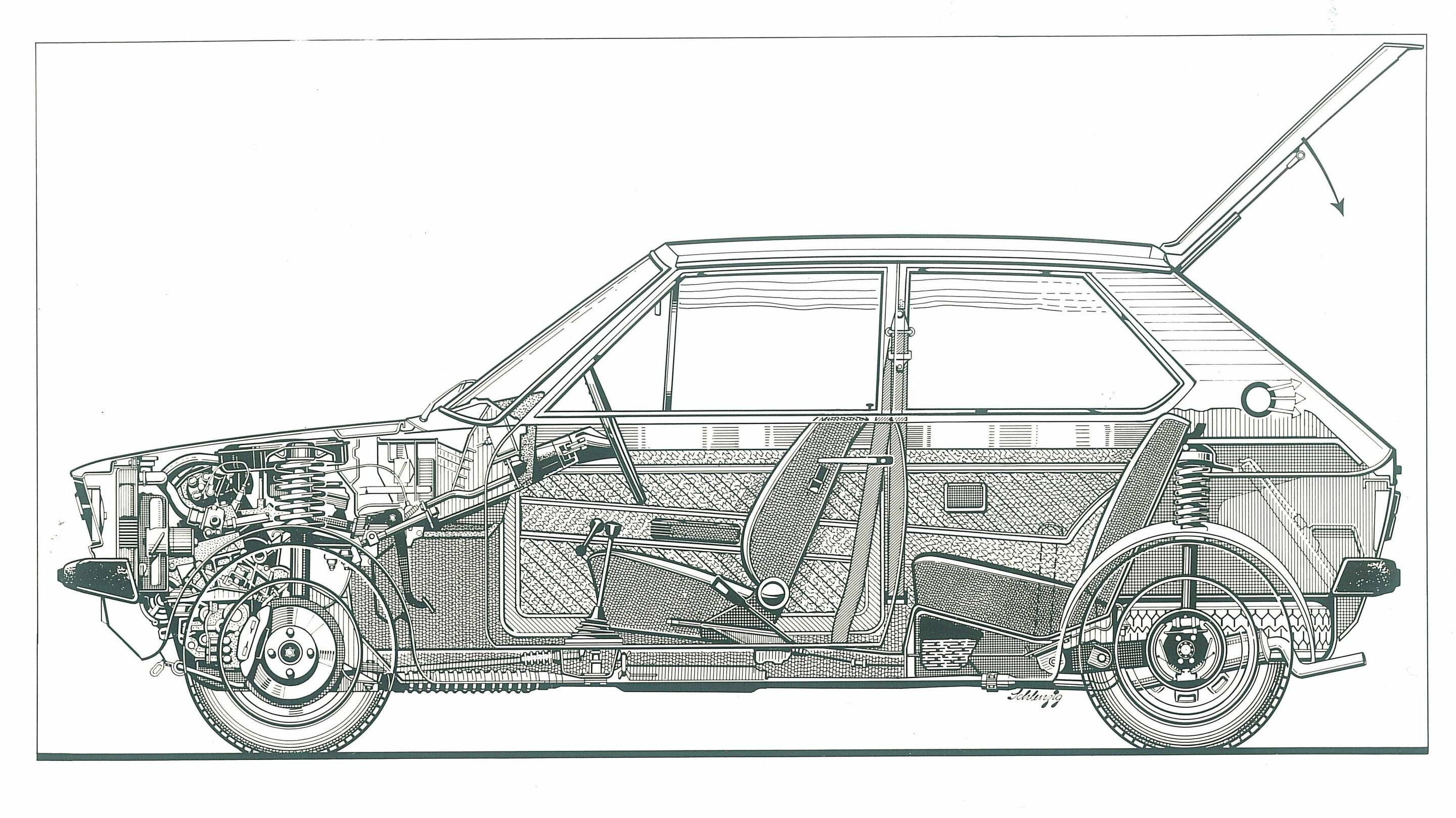Germany’s first small car was launched 50 years ago: the Audi 50
- The “mini Audi” provided the template for the VW Polo
- A total of 180,828 Audi 50s were built between 1974 and 1978
It arrived at just the right time: The Audi 50, the first small car from a German manufacturer, was launched in 1974, shortly after the beginning of the oil crisis in 1973. Its fuel consumption was economical, and its design pioneering: front-wheel drive with a transverse engine, a two-door hatchback with a large trunk and fold-down backrest, compact external dimensions, and appealing road performance and driving characteristics. Moreover, the Audi 50 was a blueprint for the structurally almost identical VW Polo, which was launched seven months later, leveraging synergies within the Volkswagen Group – already a recipe for success half a century ago.
It was meant to be modern and versatile, the new Audi 50 – and complete the model range of the Audi 80 and Audi 100 at the bottom end. As early as 1970, the engineers at Audi NSU Auto Union AG started work on the project, spearheaded by CTO Ludwig Kraus. They were looking for a successor to the stalwart NSU small car, which was nearing the end of production. The developers constantly had the following goal: “A contemporary car must be the right size for today’s imperatives,” as stated in the design manifesto for the Audi 50. The key to success was the transverse engine. This allowed the Ingolstadt engineers to fashion a car with a relatively large interior despite its total length of 3.49 meters. Two versions of the “mini Audi,” which weighs just 685 kilograms, were launched: the Audi 50 LS with 50 PS and the Audi 50 GL with 60 PS, both with 1.1-liter engines. The Audi 50 LS had a maximum speed of 142 kph, while the Audi 50 GL maxed out at 152 kph. The 50-PS version used regular gasoline, but the more powerful 60-PS car needed super-gasoline. In 1977, the latter variant was replaced by a newly developed 1,300 cc engine, which ran on ordinary gasoline. Responsibility for designing the appearance of the Audi 50 was entrusted to Hartmut Warkuß, who had previously designed the Audi 80. Warkuß crafted a delicate, timeless form around the package built by Ludwig Kraus.
The Ingolstadt team presented the Audi 50 to the international media in Sardinia in the summer of 1974. It reached dealers for the first time on October 26: the Audi 50 LS was priced at 8,195 Deutschmarks, and the Audi 50 GL at 8,510 Deutschmarks. The “mini Audi” was planned and developed initially at Neckarsulm and later at Technical Development Ingolstadt and was built at the Volkswagen plant in Wolfsburg. Precisely 43,002 Audi 50 models had come off the assembly lines in Wolfsburg by March 31, 1975, when production also started on the structurally almost identical VW Polo. Production of the Audi 50 ceased in the summer of 1978, by which time 180,828 models had been built. From then on, Audi has concentrated more on mid-range and higher-end cars. Even if the Audi 50 blossomed only for a few short years, it established the small-car segment in the Volkswagen Group; subsequently, millions of VW Polos were built over its various generations.
